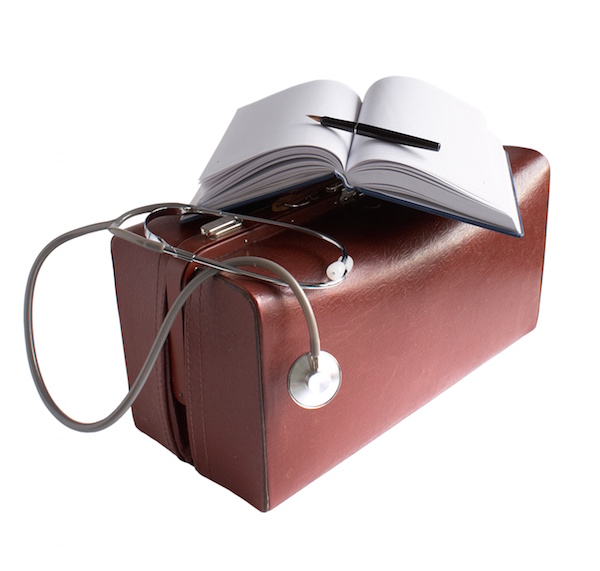WEDNESDAY, Jan. 15, 2014 (HealthDay News) — Medicine alone cannot improve the health of the nation — not when one in five Americans lives in unsafe neighborhoods where pollution, crime and joblessness are prevalent; nutritious food is scarce; and the well-being of young people is at risk, an expert panel reports.
What’s needed is a “seismic shift” in the way the nation approaches health care, according to the Robert Wood Johnson Foundation’s Commission to Build a Healthier America.
The panel’s exhaustive report urges leaders in public, private, nonprofit and academic settings to work together to address social and environmental factors that impact people’s health.
“We must put just as much energy into creating conditions that will keep people well in the first place as we do into providing treatment when it is needed,” the commission wrote.
The 16-member panel, led by Dr. Mark McClellan, former administrator of the U.S. Centers for Medicare & Medicaid Services, and Alice Rivlin, former director of the U.S. Office of Management and Budget, identified three areas for improvement:
- Investment in early childhood education.
- Development of safe housing.
- Incentives for medical providers to address nonmedical factors that impact health.
The panel said these actions have the greatest potential to impact overall health.
“Consumers know full well that the realities of their everyday lives — where they live, the food they eat, whether they can pay their bills at the end of the month — impact their health,” said commission member Rebecca Onie, co-founder and CEO of Boston-based Health Leads.
“Each of us has a responsibility to make healthy choices, but … for many folks that’s just harder to do because they don’t have access to the resources they need to be healthy,” said Onie, whose organization connects low-income patients with food, heat and other basic needs.
The Commission to Build a Healthier America issued its first recommendations in 2009. The new analysis, released Monday, builds on that work by providing specific advice for advancing the nation’s health and highlighting community-based initiatives.
Carol Naughton, senior vice president of Purpose Built Communities, an Atlanta-based nonprofit consulting group that helps local leaders across the country rebuild struggling neighborhoods, praised the commission’s report.
“I think this is going to be a real call to action, and it provides good granular examples of what you can do to get better outcomes,” Naughton said.
The revitalization of Atlanta’s East Lake neighborhood serves as a model for change. Community leaders replaced poverty-stricken housing with high-quality, mixed-income apartments. They also opened the city’s first charter school, which is now ranked first among Atlanta’s schools. And they partnered with the YMCA, which provides physical-education classes.
Thanks to safe sidewalks, about half of the school’s 1,300 children walk to school each day, Naughton said. A cycling club was launched, healthy breakfasts and lunches are served, and students are much trimmer than when the school first opened, she said.
Investing in America’s youth should be a national priority, the commission said. Yet the United States ranks 25th out of 29 industrialized counties in early childhood education.
According to the latest research, children exposed to the stress of poverty “grow up to be adults with very unhealthy outcomes,” said Jessie Rasmussen, president of the Buffet Early Childhood Fund in Omaha, Neb.
Enter Educare, a network of full-day, year-round schools serving at-risk children from birth to age 5, one of several model programs mentioned in the report.
Kids at Educare schools get high-quality early learning opportunities and access to health, nutrition and mental-health consultants. That offsets the negative effects of stress, said Rasmussen, whose nonprofit organization partners with the Chicago-based Ounce of Prevention Fund, which created the Educare model.
One of the three main recommendations from the Commission to Build a Healthier America targets the medical community. The commission said health care providers should work more closely with community organizations to help link patients with nonmedical services.
It’s not just the poorest of the poor who need help, but people working two or three jobs to make ends meet, Onie said. Health Leads recently began working with a new clinic in Boston, at which 59 percent of patients reported having an unmet resource need.
“They were reporting, for example, that they couldn’t refrigerate their diabetes medications because the utilities company had cut off their electricity,” Onie said. “Or they couldn’t afford heat at home even though the cold air was triggering their asthma.”
The commission did not determine the cost of the proposed reforms, but it might require making tough decisions on how to redeploy existing resources to yield the greatest impact on health, Onie said.
This much is clear: The United States cannot afford to devote increasing levels of spending to medical care, especially for preventable health conditions, the panel said.
Avis Vidal, a professor of urban planning at Wayne State University in Detroit, said not all health interventions are costly. “Moms walking kids to school isn’t expensive if moms are not employed in full-time jobs,” she said.
“But things like [making] sure all assisted low-income housing developments are near good public transportation — that’s big bucks,” Vidal said.
More information
Read more about building a healthier America at the Robert Wood Johnson Foundation.
Copyright © 2025 HealthDay. All rights reserved.

